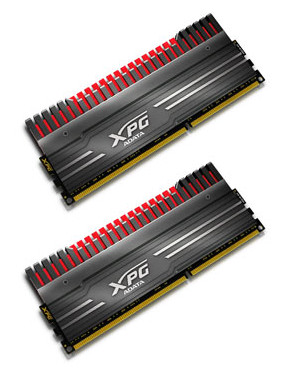Adata Releases its 3100 MHz XPG V3 Overclocking Memory
Adata has released some new memory, and it is very, very speedy.
Adata has launched some new RAM – the XPG V3 DDR3 overclocking memory. The memory is built to be super speedy and very durable, and to be used in conjunction with an Intel Z97 series motherboard.
Out of the box, the fastest kit is rated to reach speeds of up to 3100 MHz. Of course, skilled overclockers might be able to take this a bit further, but the XMP profile should do the work for you up to 3100 MHz. Kits will be available with various frequencies, where the lowest speed will be 1600 MHz. Timings vary from CL9 through CL12, depending on the frequency, and the memory will only come in kits of either 2x 4 GB or 2x 8 GB.
The PCBs of the memory modules are eight layers thick and have a 2 oz copper design. They also come with very big heatsinks, which ensure that all the chips are cooled sufficiently. For enthusiast overclocking with LN2, these can be removed.
No word on pricing or availability yet, but expect these to range from perfectly reasonably priced to absurdly expensive as the chosen frequency goes up.
Follow Niels Broekhuijsen @NBroekhuijsen. Follow us @tomshardware, on Facebook and on Google+.
Get Tom's Hardware's best news and in-depth reviews, straight to your inbox.
Niels Broekhuijsen is a Contributing Writer for Tom's Hardware US. He reviews cases, water cooling and pc builds.

